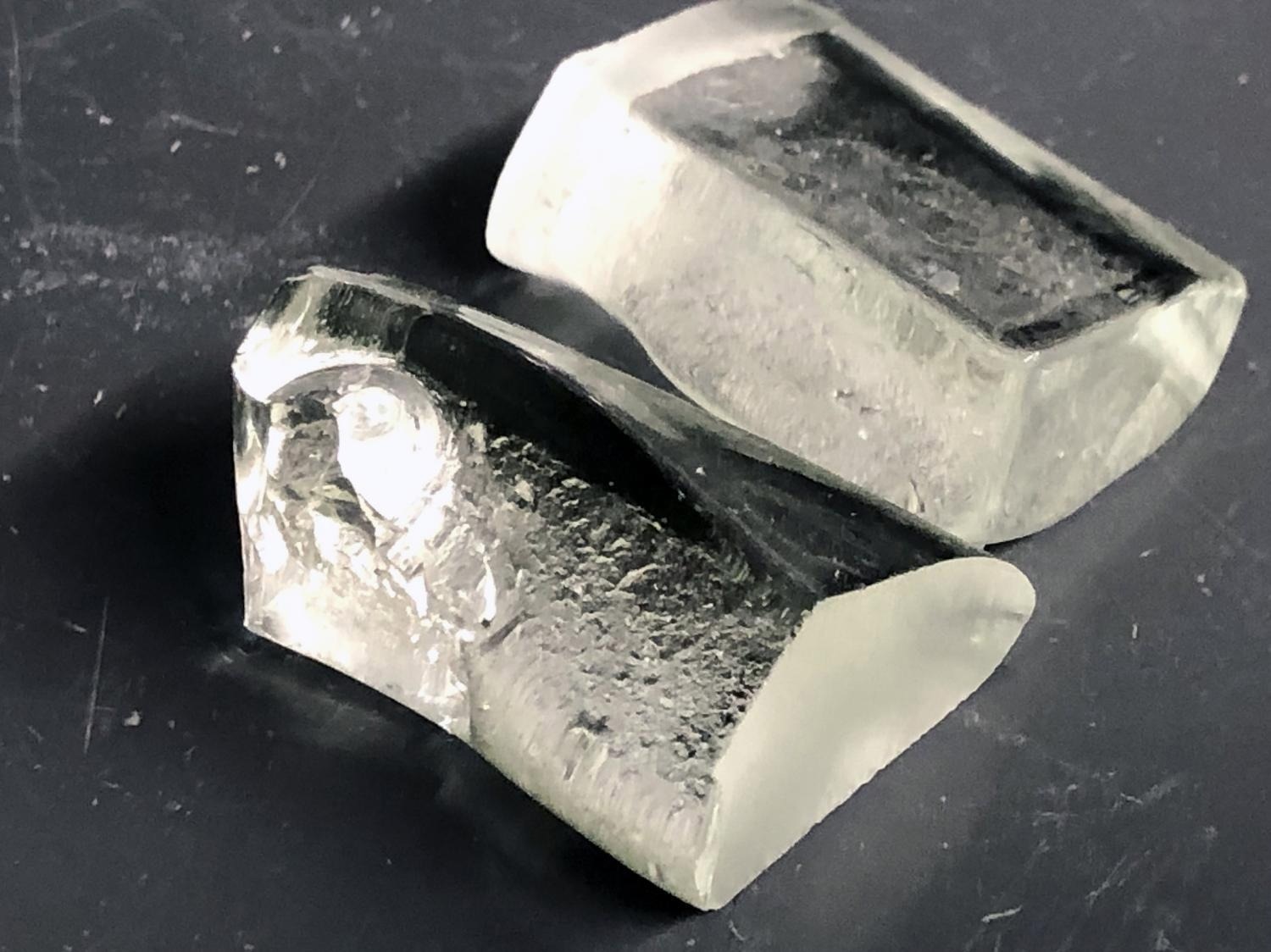Post Time:Jul 04,2023Classify:Industry NewsView:1198
Across the globe, glass manufacturing produces a minimum of 86 million tons of carbon dioxide annually. A new kind of glass promises to cut this carbon footprint in half.

A sample of LionGlass, a new type of glass engineered by researchers at Penn State that requires significantly less energy to produce and is much more damage resistant than standard soda lime silicate glass. Image Credit: Adrienne Berard
The invention, known as LionGlass and engineered by researchers at Penn State, needs considerably less energy to produce and is highly damage-resistant compared to the standard soda lime silicate glass. The research group has filed a patent application as an initial step toward bringing the product to market.
Soda lime silicate glass is the common glass that is utilized in daily items right from windows to glass tableware, and is made by melting three main materials: soda ash, quartz sand, and limestone. Limestone is calcium carbonate, and soda ash is sodium carbonate, both of which liberate carbon dioxide (CO2), a heat-trapping greenhouse gas, as they have been subjected to melting.
“During the glass melting process, the carbonates decompose into oxides and produce carbon dioxide, which gets released into the atmosphere,” stated Mauro.
The scientists stated they were astonished to find that the new glass, named after Penn State’s Nittany Lion mascot, possesses considerably higher crack resistance than traditional glass.
Few of the team’s glass compositions consisted of such a powerful crack resistance that the glass would not crack, even under one kg-force load from a Vickers diamond indenter. LionGlass is at least 10 times as crack-resistant as standard soda lime glass, which develops cracks under a load of around 0.1 kg force.
The scientists described that the limits of LionGlass have not yet been discovered, because the maximum load enabled by the indentation equipment has been reached.
“We kept increasing the weight on LionGlass until we reached the maximum load the equipment will allow. It simply wouldn’t crack,” stated Nick Clark, a postdoctoral fellow in Mauro’s laboratory.
Mauro explained that crack resistance is one of the most important qualities to test for in glass, as it is how the material ultimately fails.
Over the years, glass develops microcracks near the surface, which turn out to be weak points. When a piece of glass breaks, it is because of the weaknesses caused by present microcracks. Glass that is resistant to developing microcracks in the first place is particularly beneficial, added Mauro.
Mauro believes that the enhanced strength of LionGlass means that the products made from it could be lighter in weight. Since LionGlass is 10 times more damage resistant compared to present glass, it could be considerably thinner.
Mauro notes that the research group is still evaluating the potential of LionGlass. They have filed a patent application for the complete family of glass, which implies that there are several compositions inside the LionGlass family, each with its diverse properties and possible applications.
Currently, they are in the process of exposing several compositions of LionGlass to an array of chemical surroundings to study how it reacts. The outcomes gathered will help the team develop a deeper knowledge of how LionGlass could be utilized across the world.
Mauro stated, “Humans learned how to manufacture glass more than 5,000 years ago and since then it has been critical to bringing modern civilization to where it is today.”
Mauro added, “Now, we are at a point in time when we need it to help shape the future, as we face global challenges such as environmental issues, renewable energy, energy efficiency, health care, and urban development. Glass can play a vital role in solving these issues, and we are ready to contribute.”
Source: https://www.azom.com/newsAuthor: shangyi